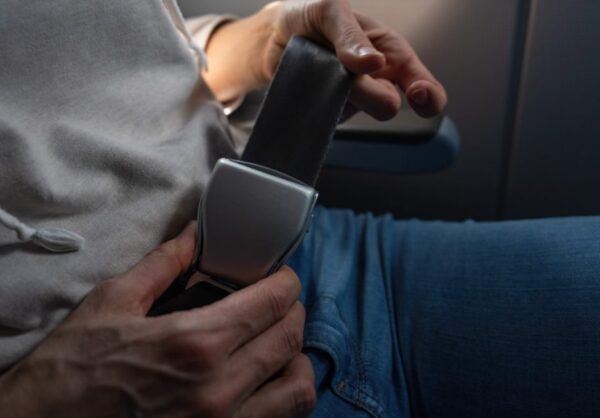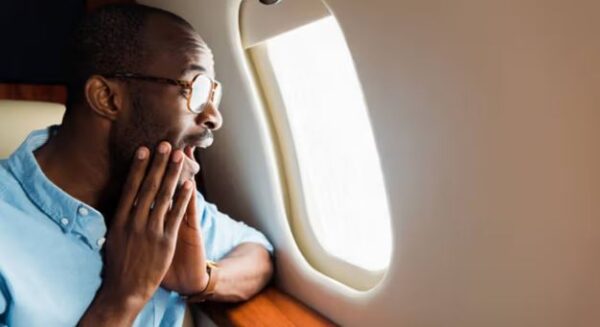Lifestyle
Turbulence: A look into what causes shakes mid-flight and how to stay safe

Encounters with extreme turbulence while in the air can be terrifying. One recent example of a severe incidents saw crew members on board a flight across Australia being taken to hospital.
In the last year, there have been numerous incidents, from eight passengers requiring medical assistance after their plane was struck on the way to Portugal to a British Airways flight that hit such strong severe turbulence over the Bay of Bengal that pilots had to return to the airport they’d just departed from, with several members of cabin crew reporting injuries.
Even seasoned fliers can, at times, get spooked by the mid-flight bumps and shakes, though in reality the vast majority of cases will be nothing more serious than a jiggle to your in-flight meal.
We look at what causes turbulence, answer some of the most commonly asked questions, and investigate whether it can ever bring down an aircraft.
What is turbulence?
Turbulence is caused by eddies of “rough air” – a bit like waves becoming choppy at sea. The Federal Aviation Administration defines clear-air turbulence (CAT) as “sudden severe turbulence occurring in cloudless regions that causes violent buffeting of aircraft … CAT is especially troublesome because it is often encountered unexpectedly and frequently without visual clues to warn pilots of the hazard.”
There are three main reasons turbulence occurs: thermal (warm air rises through cooler air); mechanical (a mountain or manmade structure disrupts air flow); and shear (on the border of two pockets of air moving in different directions).
This makes the aircraft rise and fall and rock from side to side.
Thousands of planes experience severe turbulence every year, costing the aviation industry up to $1bn through flight delays and structural damage.
Is turbulence normal?
It’s completely normal. And although it can feel scary, modern aircraft are designed to withstand a huge amount of turbulence.
Pilots often know when they’re going to hit turbulence from weather and radar reports. They radio air traffic control and pilots flying a similar route when they come across choppy air, and respond by alerting passengers and slowing the plane down to “turbulence penetration speed”, which reduces the chance of damage to the aircraft and gives a smoother ride.
Are we seeing more turbulence?
Yes. Global heating is causing disruptions in different layers of the atmosphere. Since 1979, wind shear in the jet stream has increased 15 per cent, according to Dr Paul D Williams, a professor of atmospheric science at the University of Reading
His research projects that clear-air turbulence will more than double by around mid-century in the mid-Northern Hemisphere – affecting popular routes like New York-London and San Francisco-Tokyo.
Can I be injured by turbulence?
Yes – but there are far fewer turbulence related incidents than you might think. According to data from America’s Federal Aviation Administration (FAA), the number of injuries has averaged 33 per year over the last 16 years – in 2017 there were just 17. Considering 2.6 million passengers fly in and out of US airports every day – 959 million a year – the odds of being injured by turbulence are pretty low.
What is the best thing to do during turbulence?
Do as pilots do – always wear your seat belt. Whenever you return from the toilet and sit back in your seat, strap in. Turbulence injuries are often caused because people aren’t wearing their belt.
Last year, Steve Steve Landells of pilots union Balpa told The Independent: “Don’t be tempted to get up when the captain has told you to strap in; we are always talking to the pilots of aircraft ahead of us and, even if it is smooth when we put the signs on, we may know it is going to get bumpy soon.”
The FAA offers the following tips for staying safe:
- Listen to the flight attendants. Pay attention to the safety briefing at the beginning of your flight and read the safety briefing card.
- Buckle up. Keep you and your family safe by wearing a seat belt at all times.
- Use an approved child safety seat or device if your child is under two.
- Prevent inflight injuries by adhering to your airline’s carry-on restrictions.
Could turbulence bring down my flight?
“The short answer is yes,” senior aviation consultant Adrian Young tells The Independent – but it’s unlikely.
Weather at high altitude (storms and clear air turbulence), microbursts at ground level and wake turbulence caused by other aircraft can all be included under the term “turbulance” according to Young.
“The first is rare as the cause of a crash in transport aircraft. There are a couple of examples from the 1960s,” he says.
“Microbursts cause fewer accidents now than they did in the 1990s. See the American accident at Little Rock in 1999 (an MD-82, flight AA1420). Better extreme weather detection systems exist and flight techniques have been improved.
“Wake turbulence affects smaller aeroplanes more than large ones. One accident comes to mind; American 587 at New York in 2001.”
Modern-day engineering and technology reduce the risk dramatically – satellites and advanced meteorology technologies give pilots extremely accurate forecasts of areas of expected turbulence.
Utimately, “it’s rare and the industry has worked over the years to reduce the risk,” says Young.









